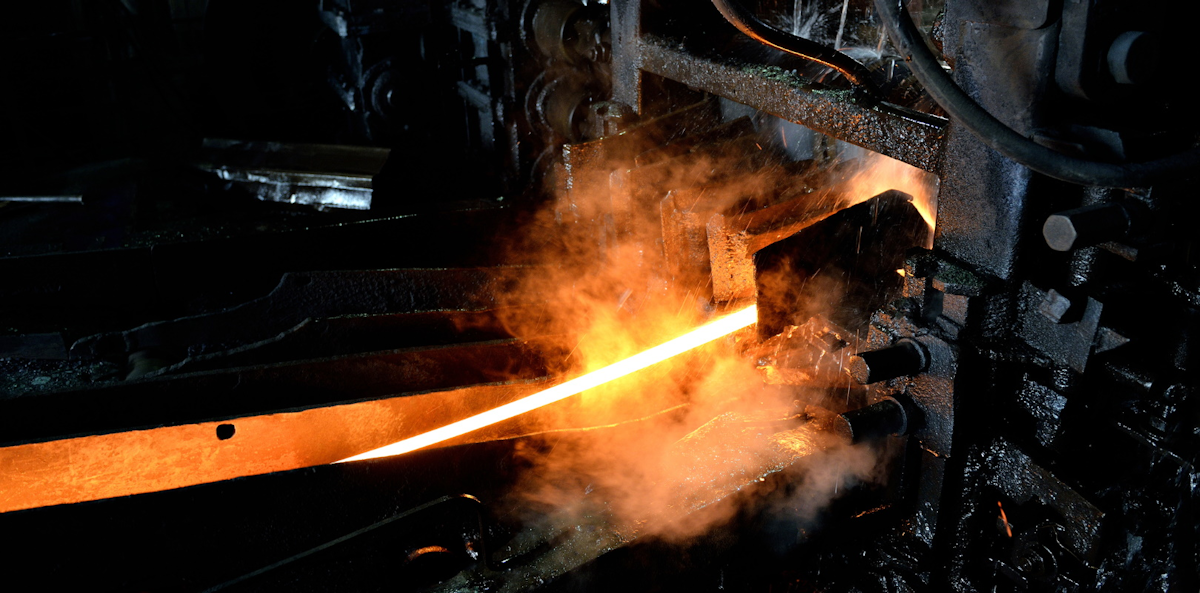
The Supreme Court said June 22 they would not hear the appeal for a case brought by a steel trade group that challenged President Trump’s authority to jack up steel tariffs.
It’s another disappointing result for the American Institute for International Steel, a trade group representing steel importers. The Supreme Court declined to hear their case in 2019 after the AIIS went straight from the U.S. Court of International Trade to the highest court, skipping the U.S. Court of Appeals. In March 2020, the U.S. Court of Appeals ruled against the trade group.
The tariffs, issued by President Trump in March 2018, run on the Trade Expansion Act of 1962’s Section 232, which allows the President to adjust the manner or amount of how a certain product is imported if he or she determines a threat to national security. According to the AIIS, this delegates powers to the President that the Constitution reserves for the legislative branch. In a 1976 case, the Supreme Court upheld Section 232’s constitutionality.
On the opposite side of the issue from the AIIS are U.S. steel manufacturers, who hailed the tariffs and say foreign steel manufacturers—especially China—threaten domestic steel production. The American Iron and Steel Institute released a statement June 22 praising the Supreme Court’s recent decision to allow the tariffs stand unchallenged.
“We are pleased that the U.S. Supreme Court today rightly affirmed our strong belief, and the previous decisions of the Court of International Trade and Court of Appeals, that the challenge to the Section 232 statute is without merit,” said Thomas J. Gibson, CEO of the American Iron and Steel Institute. “This lawsuit by steel importers was a weak attempt to mask the fact that surging foreign imports have severely impacted the domestic steel industry and threaten our national and economic security.” The Court’s decision, Gibson said, acknowledged that Section 232 is Constitutionally sound.
“We have consistently maintained this fact and are pleased that the highest Court agreed,” said Gibson.
According to domestic steel manufacturers, the tariffs have somewhat evened the field between American and Chinese steel manufacturing. Chinese steel manufacturers receive enough funding from their government that they can afford to overproduce steel, driving prices down and materially harming American manufacturing operations. As such, proponents of the tariffs say, the “national security” rationale for establishing the tariffs is no joke.
As such, proponents of the tariffs say, the “national security” rationale for establishing the tariffs is no joke. After the U.S. Court of Appeals ruled against the AIIS in March 2020, Richard Fruehauf, VP of strategic planning at U.S. Steel, testified to Congress on the importance of the tariffs. The Section 232 tariffs, he said, “must be kept strong.” Otherwise, a “tidal wave of foreign steel” would quickly overwhelm domestic production.
Pittsburgh-based United States Steel Corporation updated its second quarter outlook today, predicting adjusted earnings of $315 million. That figure excludes some charges, including about $100 million in restructuring. The company’s expected liquidity requirements through the end of the year are $700 million, unchanged from the company’s May 21 prediction.
The COVID-19 pandemic froze production lines for weeks or months and crushed demand for steel, even as the plants which produced it were forced to close or slow production as well. The worst of the economic fallout is predicted to come during the second quarter, followed by a slow return to normal conditions. Specifically, U.S. Steel predicts its flat-rolled segment will see much worse results than the first quarter thanks to shutdowns in automotive plants and the energy end-market.
“As expected, the second quarter is being significantly impacted by the effects of COVID-19 and the expected nonrecurring costs associated with a significant portion of our steelmaking operations being idled in the quarter,” said U.S. Steel CEO David B. Burritt in a statement.
Burrit said optimism at the company was “growing” despite the challenging second quarter thanks to OEMs restarting operations and returning demand. “Protecting lives and livelihoods remains our top priority and by keeping our employees and communities safe and the business resilient, we can continue to meet our customers’ needs as we emerge from unprecedented market conditions,” said Burritt.
The World Steel Association recently predicted that global steel demand would decline 6.4% over the year to 1.654 billion metric tons as a result of the pandemic, before recovering 3.8% to 1.717 billion metric tons in 2021. Complicating matters for U.S.-based steelmakers like U.S. Steel is China’s sustained dominance in the field. According to the WSA’s June 7 report, China’s economic recovery started in late February, just as the COVID-19 impact ended the longest growth period on record in the United States. It has since returned to 100% productivity in April. China regularly produces about half of all raw steel in the world.
"hear" - Google News
June 22, 2020 at 11:06PM
https://ift.tt/37ScKRX
Supreme Court Won't Hear American Steel Importer's Tariff Challenge - IndustryWeek
"hear" - Google News
https://ift.tt/2KTiH6k
https://ift.tt/2Wh3f9n
Bagikan Berita Ini















0 Response to "Supreme Court Won't Hear American Steel Importer's Tariff Challenge - IndustryWeek"
Post a Comment